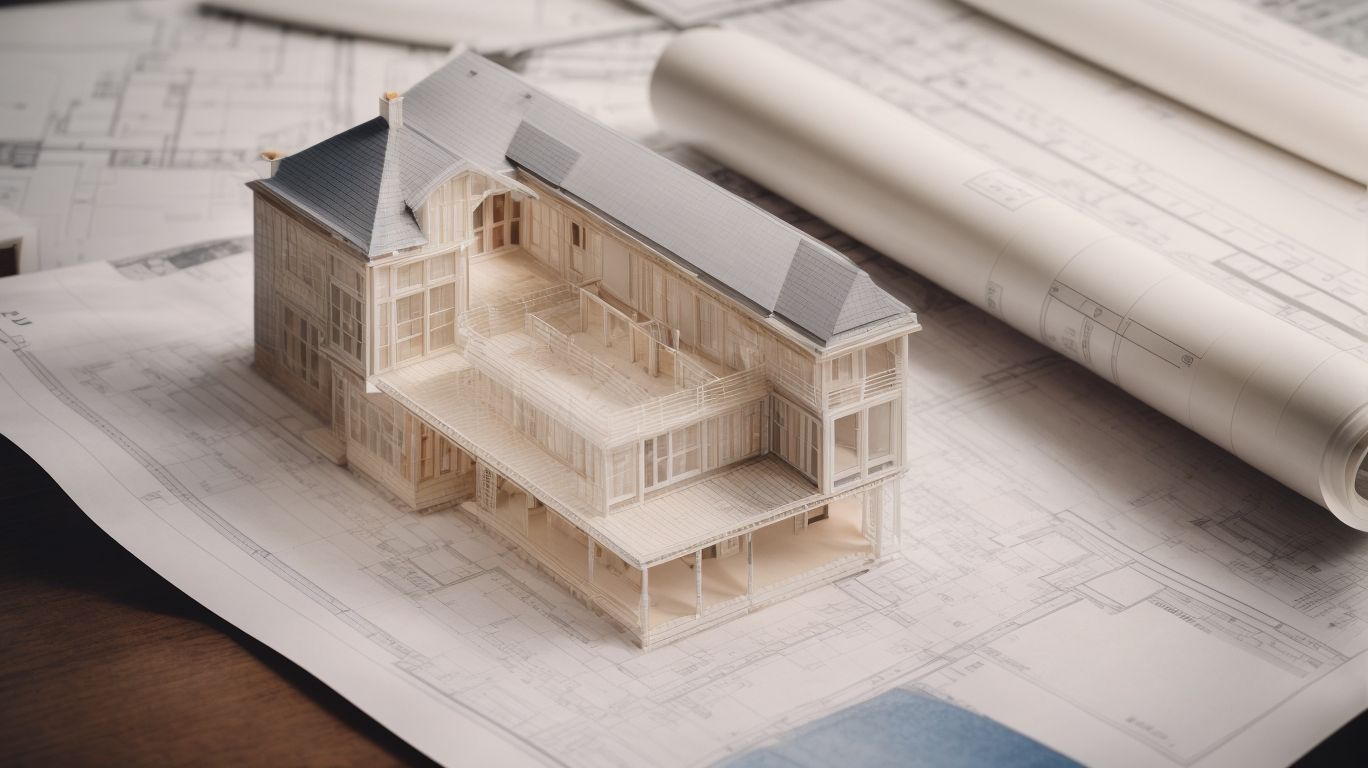
How to Hire a Seismic Retrofitting Expert in San Francisco
Seismic retrofitting is a crucial process for ensuring the safety and stability of buildings in earthquake-prone areas like San Francisco. In this article, we’ll explore the importance of seismic retrofitting, its benefits, and how to determine if your building needs it.
We’ll also discuss the steps involved in the retrofitting process and provide tips on finding and hiring a reliable seismic retrofitting expert in San Francisco. Whether you’re a homeowner or a property manager, this guide will help you navigate the process with confidence.
What is Seismic Retrofitting?
Seismic retrofitting is a construction technique that involves strengthening the structural integrity of a building to minimize damage and ensure safety during an earthquake.
It is a crucial process, especially in earthquake-prone regions where the risk of seismic activity is high. Buildings without proper retrofitting are more susceptible to structural failure during an earthquake, posing a significant threat to occupants and nearby structures.
Structural engineers play a pivotal role in seismic retrofitting. They assess the building’s current condition, identify weak points, and devise solutions to reinforce its strength and stability. Their expertise ensures that the retrofitting process is tailored to the specific needs of each building, ultimately enhancing its resilience in the face of seismic events.
Why is Seismic Retrofitting Important in San Francisco?
Seismic retrofitting is crucial in San Francisco due to its high seismic activity and stringent building codes that require buildings to undergo seismic upgrades for compliance and safety.
This ensures that structures are better equipped to withstand potential seismic events, ultimately safeguarding the lives of occupants and minimizing structural damage.
Compliance with local building codes is essential in mitigating the risk of collapse or significant damage during an earthquake, reinforcing the need for proactive seismic retrofitting measures.
By implementing these upgrades, buildings can not only meet regulatory standards but also enhance the overall safety and resilience of the urban environment, contributing to the long-term sustainability of San Francisco’s built infrastructure.
What are the Benefits of Seismic Retrofitting?
Seismic retrofitting offers several benefits, including increased structural stability, reduced risk of property damage, and protection against earthquake-related hazards.
Increases Structural Stability
Seismic retrofitting enhances structural stability through the implementation of advanced retrofitting techniques and the use of resilient building materials.
To mitigate the impact of seismic forces, engineers may use techniques such as base isolators, dampers, and strengthening of key structural components. This can greatly improve a building’s overall resilience.
Materials like fiber-reinforced polymers, steel reinforcement, and concrete retrofitting are commonly used to enhance a building’s ability to withstand seismic events. By integrating these methods, engineers can ensure the safety of occupants and minimize potential damage to the structure.
Reduces Risk of Property Damage
Seismic retrofitting reduces the risk of property damage by reinforcing building foundations and implementing seismic upgrades to withstand seismic forces effectively.
This process involves strengthening the structural integrity of buildings, which can prevent collapse during an earthquake. By integrating advanced materials and technologies, such as base isolators and damping systems, structures are better equipped to absorb and dissipate seismic energy.
Retrofitting measures improve building performance, minimizing displacement and ensuring occupant safety. Seismic retrofitting plays a crucial role in protecting properties and communities from the destructive impact of earthquakes.
Protects Against Earthquake-Related Hazards
Seismic retrofitting protects buildings against earthquake-related hazards by implementing structural strengthening measures that adhere to retrofitting standards and guidelines.
In seismic-prone areas, it is crucial for buildings to undergo thorough assessment and retrofitting to minimize potential damage from seismic events.
Reinforcing key structural components, including foundations, walls, and roofs, significantly improves a building’s resistance to seismic forces.
By incorporating innovative technologies and materials and adhering to established retrofitting standards, buildings are better equipped to withstand the impact of earthquakes.
This proactive approach helps safeguard lives, property, and vital infrastructure during seismic activities.
How to Determine if Your Building Needs Seismic Retrofitting?
Determining the need for seismic retrofitting involves assessing the age and type of building, evaluating the local seismic activity, and examining any previous structural retrofitting or damage. These factors play a crucial role in ensuring the safety and stability of a building in the event of an earthquake.
Building age is important as older structures may not have been built to withstand the forces of modern seismic activity. Evaluating the local seismic activity helps in understanding the potential magnitude and frequency of earthquakes in the area. Examining any past structural retrofitting or damage provides insight into the building’s previous resilience and areas that may need further reinforcement. These assessments guide the decision-making process for implementing seismic retrofitting measures.
Age and Type of Building
The age and type of the building play a crucial role in determining the potential need for seismic retrofitting. Older structures, especially those constructed before modern seismic standards were established, are more susceptible to the forces of earthquakes. The type of construction, such as unreinforced masonry or soft-story buildings, can further amplify the need for retrofitting.
It is essential to assess the building’s vulnerabilities and prioritize retrofitting efforts to mitigate the potential risks associated with seismic events. By maintaining structural integrity through retrofitting, the building can better withstand seismic forces, ensuring the safety of occupants and minimizing damage in the event of an earthquake.
Location and Seismic Activity
The geographical location and level of seismic activity in an area are critical factors in conducting a risk assessment to determine the necessity of seismic retrofitting for buildings.
The susceptibility of a region to seismic events and the potential impact on structures are directly influenced by its geographical location and tectonic characteristics. Understanding the specific seismic hazards, such as ground shaking, liquefaction, and fault rupture, is essential for evaluating the risk posed to buildings and infrastructure.
By considering these factors, engineers and authorities can prioritize resources and implement appropriate retrofitting measures to enhance seismic resilience and mitigate potential damage in high-risk areas.
Previous Structural Damage
Evaluating any previous structural damage and exploring retrofitting solutions through comprehensive inspection is essential in determining the necessity of seismic retrofitting for a building.
This assessment helps in understanding the existing vulnerabilities and potential weak points that may compromise the structural integrity during a seismic event.
By conducting thorough inspections, engineers and building professionals can identify the specific areas that require reinforcement or modification to enhance the building’s resilience.
It also allows for the consideration of retrofitting solutions that are tailored to address the unique characteristics and challenges of the building, ensuring that the retrofitting measures are effective and appropriate for the specific structure.
What are the Steps Involved in Seismic Retrofitting?
The steps in seismic retrofitting include conducting a structural assessment, designing and planning retrofitting measures, obtaining necessary permits and approvals, and executing the retrofitting construction process.
The structural assessment involves evaluating the existing building’s current condition and identifying potential weaknesses. This is followed by determining the most suitable retrofitting solutions.
Once the assessment is complete, engineers and architects collaborate to design and plan the retrofitting measures, taking into consideration factors such as building codes, material suitability, and structural integrity.
After obtaining the required permits and approvals from relevant authorities, the retrofitting construction process commences. This includes implementing strengthening techniques and reinforcement methodologies to enhance the building’s resistance to seismic forces.
Structural Assessment
A thorough structural assessment is conducted to evaluate the building’s condition, consult with experts, and estimate the cost involved in implementing seismic retrofitting measures.
During the structural assessment, engineers and architects carefully examine the structural elements of the building to identify any weaknesses or vulnerabilities that could compromise its stability during an earthquake. This often includes a detailed analysis of the foundation, load-bearing walls, and the overall structural integrity.
Expert consultation becomes pivotal in this phase, as specialized seismic retrofitting engineers provide valuable insights and recommendations for the most effective retrofitting measures. Accurate cost estimation is crucial to determine the financial feasibility of the proposed retrofitting solutions and ensure that the necessary resources are allocated appropriately.
Design and Planning
The design and planning phase of seismic retrofitting involves collaborating with an engineering firm to develop comprehensive retrofitting strategies and blueprints for implementation.
This crucial phase requires a meticulous evaluation of the structural vulnerabilities and potential risks posed by seismic activity. Engineering firms work closely with architects and construction specialists to assess the existing structural integrity and devise innovative solutions to enhance the building’s ability to withstand seismic forces.
Through thorough analysis and strategic planning, the team aims to minimize structural damage and ensure the safety of occupants during a seismic event. Emphasis is placed on applying cutting-edge technologies and materials to create durable and resilient retrofits that adhere to stringent seismic codes and standards.
Permitting and Approvals
Obtaining the necessary permits and approvals involves navigating through building regulations and compliance standards to ensure the legal and regulatory aspects of seismic retrofitting are met.
This process can present significant challenges, as it requires meticulous attention to detail and thorough understanding of the specific requirements set forth by governing bodies.
From structural evaluations to environmental impact assessments, every aspect must be carefully scrutinized to align with the established guidelines.
The intricacies of securing these permits often demand collaboration with structural engineers, architects, and regulatory authorities to compile comprehensive documentation that demonstrates adherence to safety standards and building codes.
Each step in this process plays a crucial role in safeguarding the integrity of structures and the safety of occupants, making it a vital aspect of any seismic retrofitting project.
Retrofitting Construction
The retrofitting construction phase involves meticulous project management and execution of retrofitting measures to enhance building maintenance and ensure seismic resilience.
This process requires coordination with architects, engineers, and construction teams to assess the structural integrity of the building, implement necessary upgrades, and comply with building codes and regulations. Effective project management includes budgeting, scheduling, and quality control to ensure the timely completion and success of the retrofitting project.
Stakeholders such as building owners, tenants, and regulatory authorities need to be engaged to ensure seamless communication and adherence to project goals, thereby optimizing the long-term maintenance and sustainability of the building.
How to Find and Hire a Seismic Retrofitting Expert in San Francisco?
Finding and hiring a reliable seismic retrofitting expert in San Francisco involves conducting thorough research, seeking recommendations, and assessing the expertise of potential experts through consultations and assessments.
When looking for a seismic retrofitting expert, it’s important to do thorough research. This can include checking online reviews and asking for recommendations from trusted sources like friends and family. Once potential experts have been identified, it’s recommended to schedule consultations to discuss the project and evaluate their knowledge and proposed approach.
Research and Ask for Recommendations
Begin the hiring process by conducting thorough research and seeking recommendations from local seismic retrofitting experts to identify potential candidates with a strong reputation and experience.
Experts in seismic retrofitting possess specialized knowledge about the unique requirements of our locality. They can provide invaluable insights into the specific skills and qualifications to look for in candidates.
Their input is crucial in evaluating the practical experience and proficiency of potential hires. This ensures that selected individuals are well-equipped to handle the complexities of seismic retrofitting projects. By leveraging their expertise, companies can make more informed hiring decisions and strengthen their workforce with individuals who can contribute effectively to seismic retrofitting endeavors.
Check Credentials and Experience
Evaluate the credentials and experience of potential seismic retrofitting experts to ensure they possess the necessary qualifications and expertise for the project at hand.
This step is crucial in guaranteeing the safety and structural integrity of buildings. Seismic retrofitting requires specialized knowledge and skills.
By verifying the qualifications and experience of experts, clients can be confident in the expertise of the professionals entrusted with such a significant and complex task. This also minimizes the risk of errors and ensures that the retrofitting process is carried out efficiently and effectively.
Get Multiple Bids and Compare
When planning a seismic retrofitting project, it’s important to obtain multiple bids from experts in the field. This allows you to compare the proposed services and cost estimates, giving you the necessary information to make an informed decision.
To start, reach out to several reputable seismic retrofitting professionals and request detailed proposals. Each bid should clearly outline the specific services they offer, such as structural analysis, foundation strengthening, and retrofit design.
As you review the cost estimates, be sure to carefully consider the transparency and affordability of each bid. Additionally, take the time to evaluate the expertise, experience, and track record of each expert. This will help you find the right balance of quality services and competitive pricing for your project.
Consider Communication and Customer Service
Evaluate the communication skills and customer service of potential seismic retrofitting experts, considering recommendations and references to gauge their professionalism and client-oriented approach.
This analysis is crucial as it directly impacts the quality of service homeowners receive. In seismic retrofitting projects, effective communication ensures that clients are well-informed, their concerns are addressed, and the project progresses smoothly.
A client-centric approach not only fosters satisfaction but also indicates the ability to prioritize the safety and well-being of the residents. Recommendations and references play a pivotal role in unveiling these attributes, allowing homeowners to make informed decisions when selecting experts for their seismic retrofitting needs.
Review and Sign a Contract
Carefully review and sign a contract with the chosen seismic retrofitting expert, ensuring that all necessary certifications and insurance coverage are in place to commence the project with confidence.
As the contracting process nears its end, it is vital to ensure the safety of both parties involved. Before signing any documents, make sure that the seismic retrofitting expert possesses valid certifications from reputable industry organizations, guaranteeing their expertise in carrying out seismic retrofit projects.
Additionally, it is imperative to confirm that the expert has comprehensive liability insurance, providing coverage for any unexpected incidents that may occur during the project. By prioritizing these factors, you can confidently proceed with the renovation, knowing that you have chosen a competent professional who is adequately protected.




No Comments